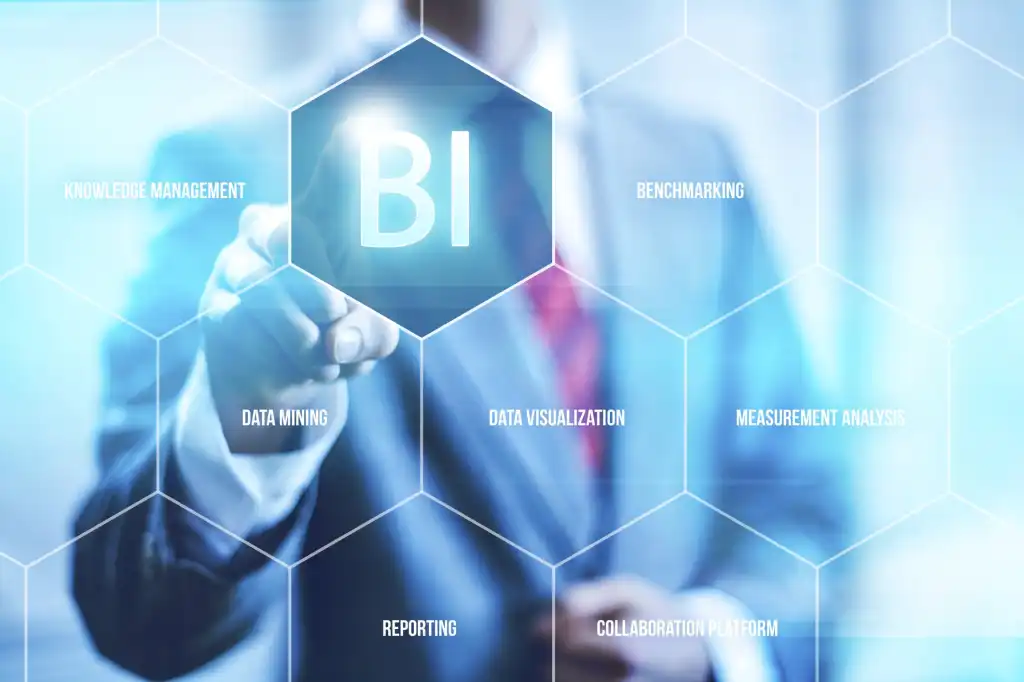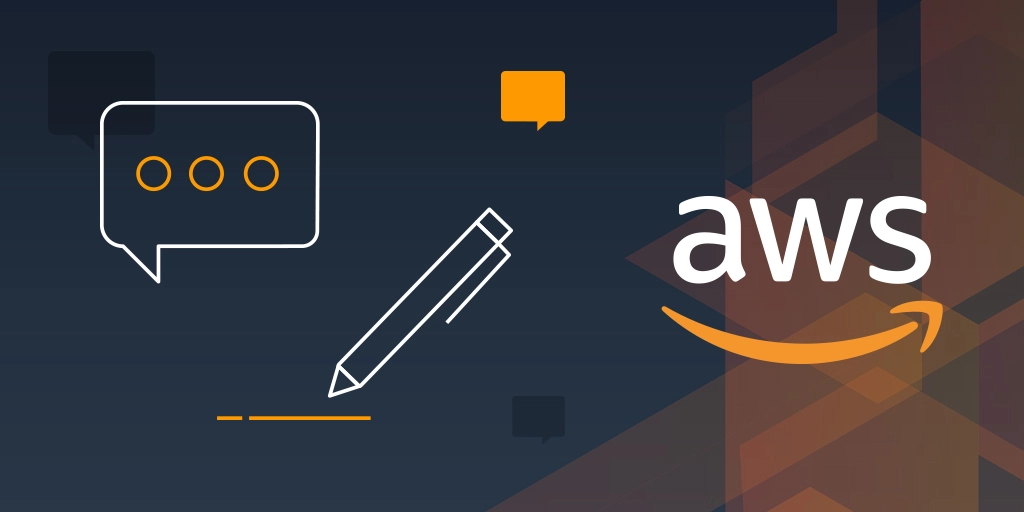The collection, storing, and analyzing of knowledge acquired by various processes and technical infrastructure with the help of a company’s operations is stated as business intelligence (BI). Business intelligence samples are data mining, analyzing methods, performance benchmarking, and descriptive analytics. BI analyses all of a company’s data and presents it in simple reports, performance metrics, and trends to help management make decisions. Business intelligence (BI) refers to the utilization of software systems and services to rework knowledge into unjust insights that assist a corporation in creating strategic and military science business selections. BI tools access and analyze data sets to provide users with detailed intelligence about the state of the business and then present analytical findings in reports, summaries, dashboards, graphs, charts, and maps. The term “business intelligence” refers to a set of tools that provide quick, easy-to-digest access to insights about an organization’s current state based on available data.
Importance of Business Intelligence
The need for business intelligence arose from the belief that managers who have inaccurate or incomplete information make poorer decisions than those who have better information. Financial model creators refer to this as “garbage in, garbage out.” BI attempts to address this issue by analyzing current data and presenting it on a dashboard of quick metrics designed to aid decision-making. The processes and methods of gathering, storing, and analyzing data from business operations or activities to improve performance are called business intelligence. These elements work together to provide a complete picture of a company, allowing people to make more informed, actionable decisions. Business intelligence has grown to include more processes and activities to improve performance in recent years.
AI/BI Development Company
These requirements imply identifying additional ways to capture information that is not already recorded, checking the data for errors, and structuring the data to allow for broad analysis. However, in practice, businesses have unstructured data or data in multiple formats, making collection and analysis difficult. An organization needs to hire AI/BI developer to stay in the market. As a result, software firms offer business intelligence solutions to optimize data-driven information. These are enterprise-level software applications that integrate data and analytics within a business. Even though software solutions are evolving and becoming more sophisticated, data scientists must still balance reporting speed and depth.
Benefits of BI/AI Development Company
Business intelligence will assist firms in making better decisions by displaying current and historical knowledge within the context of their business. Analysts often utilize business intelligence to make performance and competitive benchmarks, permitting the organization to run a lot swimmingly and with efficiency. Analysts can also spot market trends that can boost sales or revenue. When used correctly, the right data can help with compliance with hiring efforts. Few of the ideas by which BI can help businesses:
Process of BI
• Data Mining
Businesses use data processing to rework data into valuable data. Businesses will learn additional concerning their customers by victimization code to look for patterns in giant amounts of knowledge. It permits them to develop simpler selling methods, increase sales, and cut back prices. Effective information assortment, storage, and pc process are needed for data processing. Data processing is an associate degree knowledge domain subfield of engineering science and statistics with the overarching goal of extracting data from a knowledge set and reworking it into a visible structure for more use (via intelligent methods). Data mining is the middle phase of analysis about the “knowledge discovery in databases” (KDD) process. It includes aspects of database and data management, data pre-processing, model and inference considerations, interestingness metrics, complexity considerations, post-processing of discovered structures, visualization, and online updating, in addition to the raw analysis step. Identifying trends in large datasets using databases, statistics, and machine learning.
• Reporting
Business intelligence reportage covers many metallic elements, use cases and static reports, interactive dashboards, and embedded analytics. While you may have a single-use case in mind, it is critical to plan your BI strategy with the big picture in mind. Static reports, for example, may require alerts when KPIs exceed a certain threshold. As a result, real-time dashboards may be required. Dashboards may necessitate full self-service BI, allowing users to quickly explore data and answer questions. Stakeholders should be given access to data analysis to draw conclusions and make decisions.
• Querying
Queries are requests for information from a database. Users will hook up with and question knowledge sources created by their technology groups victimization today’s business intelligence systems. Typically, menus guide users through queries by displaying a list of pre-defined parameters. More subtle business intelligence systems enable the user to outline (customize) the question or need it to be written in an exceedingly specific search language. BI extracts answers from datasets by asking data-specific questions.
• Descriptive Analytics
The interpretation of historical data to better understand business changes is known as descriptive analytics. Using historical data to make comparisons is referred to as descriptive analytics. The most frequently reported financial metrics are the results of descriptive analytics, such as year-over-year pricing changes, month-over-month sales growth, user count, or total revenue per subscriber. These metrics describe what happened in a company over a specific period. To figure out what happened, preliminary data analysis is being used.
• Data Visualization
The process of understanding data patterns and insights by transforming them into visual contexts such as pivot tables, line graphs, and pie charts is referred to as data visualization. Business intelligence is a collection of technologies that provide business users with a limited number of metrics. What happened and the factors that contributed to it are defined in layman’s terms. A report from a Business Intelligence solution could be a visualization. Data analysis is transformed into visual representations such as charts, graphs, and histograms to make data easier to consume.
• Performance Metrics
Using customized dashboards to compare current performance data to historical data to track performance against goals. Thanks to today’s technology, businesses can easily capture and analyze a wide range of business intelligence (BI) metrics. The days of making business decisions based on intuition rather than data are largely behind us. Many metrics can now be measured automatically because of the availability and affordability of tools such as unified CRM solutions. Furthermore, these tools include dashboards that compile all of the metrics you need to see in one place. Vanity metrics don’t provide many useful data. Conversely, bound metrics offer vital insight into the health of a business and drive the most effective growth choices. “Golden metrics” is the name we give to them.
• Performance Benchmarking
Benchmarking is the comparison of your company’s processes and performance metrics to those of the trade. Then benchmarking will assist you in setting purposeful goals, gaining insight into trade trends, deciding what enhancements area unit needed, and improving overall performance. Benchmarking, at its most elementary, contextualizes business performance. Businesses to spot area units underperforming or overperforming in a very management context. Benchmarking higher prepares organizations to form data-driven choices concerning improvement initiatives, additionally revealing success stories that will function as the idea for future campaigns. We benchmarking compares how completely different organizations use price, time, and quality. Frequently, the top result’s a business case for creating changes that will end in larger enhancements.
• Visual Analysis
Visual analytics is the union of data analytics and visualizations. This problem-solving approach effectively facilitates high-level, complex reasoning and data-driven decision-making by integrating interactive visual representations with underlying analytical processes. Visual analytics is a subset of visual business intelligence and business analytics. It employs data mining and statistical work practices to visualize information in an easy-to-understand format. Exploring information through visual storytelling to speak insights on the fly while remaining within the analysis flow. Data analytics visual image focuses on analytical reasoning techniques that enable users to realize larger insights that may directly support deciding and planning; visual representations and interaction techniques that exploit the sensory activity processes of the human eye; information representations and transformations that format information to support visual image and analytics; and techniques that support the presentation and distribution of study leads to the app.
• Data Preparation
It is bringing together multiple data sources, identifying dimensions and measurements, and preparing the data for analysis. Data preparation could be a step within the pre-processing method that features knowledge cleansing, transformation, and consolidation. In different words, it’s the method of connecting to at least one or a lot of knowledge sources, cleansing dirty knowledge, reformatting or restructuring knowledge, and eventually merging this knowledge for analysis. It can often be the foremost long step within the analysis life cycle, and also, the speed and potency of the info preparation method have an on-the-spot impact on the time it takes to get insights.
Types of BI Software and Tools
BI software comes in a variety of shapes and sizes. Every organization has its requirement, and it is not easy for one to choose from the list of available software. It is profitable for a company to hire software developers to meet their needs. The software can be customized as per the company’s needs. Let’s look at some of the most common types of BI solutions.
• Spreadsheets
Spreadsheets such as Microsoft Excel and Google Docs are among the most popular BI tools. As long as your spreadsheets are error-free, they will allow you to analyze specific metrics. Excel does not allow the user to continue following the data past this point, so there is little room for data discovery. Rather, a mathematical understanding of the data is required. Pivot tables or manually generating views of additional dimensions would be required for more in-depth analysis. Compiling this information takes time and frequently results in preliminary analysis. Finally, the critical information you require is neither easily accessible nor certain to be reliable.
• Reporting Software
Data reporting software is used to report, organize, filter, and display data. BI reporting—the preparation, analysis, and presentation of business metrics- is critical in all businesses. This blog introduces you to the fundamentals of BI reporting. There are two types of BI reporting in business intelligence. Managed reporting occurs when a technical employee, such as an IT associate or data analyst, prepares data for non-technical users. Ad-hoc news during a metallic element platform allows non-technical users to make new reports or modify existing ones while not requiring the help of IT.
• Data Visualization Software
Data visualization software converts datasets into visually appealing, easy-to-read graphical representations to gain insights quickly. The importance of data visualization in the overall business intelligence dynamic cannot be overstated. A graphical representation of a data set is called visualization of data. Text-based data is represented graphically in charts, graphs, tables, infographics, maps, etc. Visualizations can help you discover new insights and hidden patterns in data. Data image visualization aims to spot patterns, trends, and correlations between numerous knowledge set that might be impossible to check from the knowledge within the straightforward (non-graphic) type. It helps users better understand the market’s current situation and evaluate customer needs. Furthermore, an organization can evolve by implementing new strategies and techniques to improve and expand its operations.
• Data Mining Tools
Data mining tools use artificial intelligence, machine learning, and statistics to “mine” large amounts of data for patterns. Techniques utilized in data processing embrace classification, clustering, and association. Categorizing massive datasets is thought to be classification. It is often particularly helpful in selling because it permits businesses to publish completely different ads in several domains, ensuring that the correct ads target customers and respond most favorably. Bunch takes classification to a replacement level by police investigation small anomalies or similarities that humans cannot find. As a result, the bunch will uncover new opportunities for targeted selling, operational potency, and merchandise innovation.
• Online analytical processing (OLAP)
OLAP tools enable users to analyze datasets from various perspectives based on various business objectives. Online Analytical Processing technology is employed in several Businesses Intelligence (BI) applications. OLAP is a powerful data discovery technology that enables unlimited report viewing, complex analytical calculations, and predictive “what if” scenario planning (budget, forecast). The base of all successful decisions is knowledge. Successful businesses continuously plan, analyze, and report on sales and operational activities to maximize efficiency, reduce costs, and gain market share. According to statisticians, the larger the sample size, the more likely the resulting statistic is correct. Naturally, the additional knowledge a corporation has a few specific activities, the more likely it’s that the decision to improve it’ll succeed. Every business collects information through various systems, and also the challenge remains the way to bring all of the information along to provide correct, reliable, and timely business info.
• Development of Wearable Apps
Wearables are now commonplace, measuring temperature, speed, basic movement, distance, heart rates, and other parameters. Fast-growing businesses are utilizing wearable technology to achieve a variety of business objectives. Whether it’s to safeguard employees, streamline business processes, mobilize resources, boost efficiency, or promote human wellness. However, designing such wearable apps is more difficult due to the smaller screen size and other factors such as constant connection to the human body, sensors attached, and device functionalities. We bring innovative design and engineering expertise to create prototypes for IoT-based wearable devices such as Android Wear, Apple Watch, Google Glass, Samsung Gear, and any other device. The wearable app development team creates such apps quickly and expedites the app development process to ensure a timely go-to-market.
• Artificial Intelligence
The preliminary approach of Artificial Intelligence is human intelligence modeling. AI programs can learn and make rational decisions by simulating human behaviors and thought processes. AI enterprise applications range from better medical diagnosis to more efficient energy grid design and a better understanding of retail customers. The most common and valuable type of AI-powered enterprise application is process automation.
These applications can handle boilerplate customer communication, automatically update customer information and records, and provide basic guidance on standardized contracts and documentation. Enhance your creativity. Unlock new possibilities. Boost productivity. Increase your influence. AI capabilities should be embedded in the software to provide more intelligent, automated solutions. AI technologies support diverse environments and scale to meet changing business needs, from machine learning to computer vision to natural language processing (NLP) to forecasting and optimization. Creating artificial intelligence solutions through a Data-First Approach to Decision Intelligence, utilizing advanced mathematical and statistical techniques to predict and optimize business outcomes, transforming enterprise solution capabilities, and developing business-relevant analytics for digital transformation initiatives.
Conclusion
Business Intelligence Tools are extremely versatile and can provide you with a wealth of useful information about your company’s performance and prospects. However, while it is excellent for collating/gathering data from various sources and assisting you in making sense of it, it is inadequate for collecting data directly from your customers. The Voice of Customer (VoC) is an important factor in increasing profits (as previously stated) and creating a sense of loyalty and appreciation among your customers for your efforts to provide them with a meaningful online experience.





